




































































Dear Angler,

We’re looking to expand our franchise footprint and are seeking like-minded outdoor enthusiasts who share in our vision to bring our free publication to every town in America! is is a great opportunity to own your own business, control your time and, to a great extent, control your income.
Our Ideal Franchise Candidate Will:
• Be an avid angler and/or love the outdoors.
• Have either prior business experience or a minimum of three years sales experience.
• Good communication skills
PUBLISH YOUR OWN FISHING MAGAZINE!
If you love the outdoors and dream of being in business for yourself, now is the time to choose a Coastal Angler or e Angler Magazine Franchise.
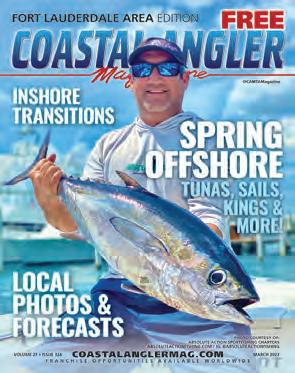
Established Brand • Proven Systems Training & Ongoing Support

Work From Home • Be Your Own Boss
• Alabama - SOLD
• Big Bend, FL
• Charlotte, NC
• Connecticut/Rhode Island
• Daytona Beach, FL - SOLD
• Destin/Pensacola, FL - SOLD
• Eastern Tennessee
• Georgia (Coastline, Savannah)
• Lake Erie, Ohio - SOLD
• Lake Michigan
• Long Island, NY
• Miami, FL - SOLD!
• New Hampshire
• New Jersey
• New Orleans, LA
• North Carolina (Raleigh, Wilmington)
• Okeechobee, FL - SOLD
• Outer Banks, VA
• Panama City, FL - SOLD!
• South Carolina (Hilton Head, Myrtle Beach)
• Tallahassee, FL/SW GA
• Texas (Coastal, Houston)
• ...YOUR HOMETOWN!
Don’t see your location? Ask one of our specialists about franchise availability in your area.
1-888-800-9794
info@coastalanglermagazine.com
franchise.coastalanglermag.com
• Good credit
If you or someone you know is looking for an opportunity to own their own home-based business and earn a living in the outdoor industry, please contact us toll-free at 1.888.800.9794 or email info@coastalanglermagazine.com.
Tight lines, Ben Martin Editor In Chief Coastal Angler Magazine e Angler Magazine


www.CoastalAnglerMag.com
FRANCHISOR-CORPORATE DIRECTORY
EDITOR IN CHIEF : Ben Martin • camads@coastalanglermagazine.com
COO : Tracy Patterson • tracy@coastalanglermagazine.com
ART DIRECTOR : Laura Kelly • graphics@coastalanglermagazine.com
EDITORIAL COORDINATOR : Nick Carter • editorial@coastalanglermagazine.com
WEBMASTER : Ryan Clapper • webmaster@coastalanglermagazine.com
ADVERTISING & FRANCHISE INQUIRIES: info@coastalanglermagazine.com • 888.800.9794
FRANCHISE DIRECTORY LINK
www.coastalanglermag.com/directory



Sfrequent, and the pelagics are plentiful. is time of year, you can usually point your boat o shore and eventually run into the mecca. However, these sought-a er pelagic species are moving around through their migrations and nding them isn’t always guaranteed. Sometimes you just get unlucky running and gunning all day, on the hunt for birds, debris and weed lines. Whether you are out there with no signs of life or just can’t seem to get away from schools of undersized sh, it’s a good idea to have a backup plan to save the day and make the fuel bill worth it.
Having a deep-drop rig ready to go can save a day of o shore shing. Sword shing can be an epic day saver, but it takes quite a bit of time, gear and involvement to have a good chance. ere are a lot of opportunities for shing the bottom between the reef and the sword grounds.
With a set-up that can handle shing between 500 and 1,000 feet, you will have what you need to quickly pepper in some drops during your day, without spending too much time setting it up and packing it away. ere are a variety of edible aliens that can be targeted, or even snagged as bycatch, when shing in the deep, but pretty much all
onboard, in case you get hung on the bottom, or adjustments need to be made due to the current. Having the right weight is important, and it is pretty easy to tell a er a drop if you have put on too much or too little. I would recommend having 6-, 8- and 10-pound weights to make your adjustments with. ese leads can be extremely pricey, so look into some DIY methods if this is something you plan to get into.
Depending on what you want to target, there are a few variations you will want for your rigs. Utilizing 300-pound mono and sleeve swivels, space out up to ve hooks along the leader, making the drop-down leaders short enough that they won’t tangle with each other. Play around with di erent size hooks and spacing between them. If you aren’t sure what might be living on a newfound bottom spot, drop a rig with varied hook sizes, having the biggest on the bottom. It is also a good idea to a x a 6-inch, 50-pound breakaway leader to the lead to save the rest of your gear when you inevitably get hung up.

Searching for new bottom spots can be one of the most exciting parts about this type of shing. You might see ledges full of life on your machine, or you might see nothing at all, and still nd sh.
You can even look for changes in the waves on the surface that indicate depth uctuations on the bottom. Mark your spots whenever you get a bite, and start your own collection of o shore honey holes.
Sweet E’nuf Charters’ two-boat eet specializes in deep-dropping out of Marathon, Florida Keys. Call them at (504) 920-6342 to book your trip this summer. Follow Capt. Quinlyn on social media @captainquinlyn.




Thevery best hunting knives possess a perfect balance of form and function. They’re carefully constructed from fine materials, but also have that little something extra to connect the owner with nature. If you’re on the hunt for a knife that combines impeccable craftsmanship with a sense of wonder, the $79 Huntsman Blade is the trophy you’re looking for.
The blade is full tang, meaning it doesn’t stop at the handle but extends to the length of the grip for the ultimate in strength. The blade is made from 420 surgical steel, famed for its sharpness and its resistance to corrosion.
The handle is made from genuine natural bone, and features decorative wood spacers and a hand-carved motif of two overlapping feathers— a reminder for you to respect and connect with the natural world.
This fusion of substance and style can garner a high price tag out in the marketplace. In fact, we found full tang, stainless steel blades with bone handles in excess of $2,000. Well, that won’t cut it around here. We have mastered the hunt for the best deal, and in turn pass the spoils on to our customers.
But we don’t stop there. While supplies last, we’ll include a pair of $99 8x21 power compact binoculars and a genuine leather sheath FREE when you purchase the Huntsman Blade
Your satisfaction is 100% guaranteed. Feel the knife in your hands, wear it on your hip, inspect the impeccable craftsmanship. If you don’t feel like we cut you a fair deal, send it back within 30 days for a complete refund of the item price.
Limited Reserves. A deal like this won’t last long. We have only 1120 Huntsman Blades for this ad only. Don’t let this beauty slip through your fingers. Call today!
Huntsman Blade $249*

Offer Code Price Only $79 + S&P Save $170
1-800-333-2045
Your Insider Offer Code: HBK186-01
You must use the insider offer code to get our special price.
Stauer ®
Stauer® 8x21 Compact Binoculars

-a $99 valuewith purchase of Huntsman Blade
What Stauer Clients Are Saying About Our Knives


“This knife is beautiful!”
— J., La Crescent, MN
“The feel of this knife is unbelievable...this is an incredibly fine instrument.”
— H., Arvada, CO
Rating of A+
14101 Southcross Drive W., Ste 155, Dept. HBK186-01 Burnsville, Minnesota 55337 www.stauer.com
*Discount is only for customers who use the offer code versus the listed original Stauer.com price.
California residents please call 1-800-333-2045 regarding Proposition 65 regulations before purchasing this product.
•12” overall length; 6 ¹⁄2” stainless steel full tang blade
• Genuine bone handle with brass hand guard & bolsters
• Includes genuine leather sheath

For many anglers, yellow n tuna settle right into the sweet-spot of the tuna shing world. ey’re bigger and stronger than black ns, while being far more approachable than giant blue ns. ey’re fast and strong, and they school up, sometimes crashing baits on the surface. ere’s so much to like about this tremendous game sh, and it doesn’t hurt that limits are relatively liberal in most places. Did we mention that yellow ns are made of the delicious meat known as ahi in sushi bars?

Here are three of the best destinations where you can test your strength against a few yellow ns. Win the battle, and you’ll eat like a king.
One of the most consistent places in the world for catching yellow ns is out of Venice, e “Yellow n Capital of the World.” Tuna are a year-round possibility here in the Northern Gulf, where the Mississippi River produces rich currents and rip lines that roll out to hundreds of oil rigs and undersea mounts known as lumps.
Summertime brings better weather and calmer seas, when getting o shore more quickly and comfortably can reward anglers with mixed bags of mahi, wahoo, snapper and tuna in the 40 to 80-pound range. However, peak season for giant yellow ns is in winter, and triple-digit sh become the norm when the bite is hot. Fish heavier than 200 pounds are a de nite possibility.


On Mexico’s Paci c Coast, where the landmass begins to curve east, Puerto Vallarta is positioned within range of some of the most proli c tuna grounds in the world. Outside of Banderas Bay, a series of islands and deep-sea banks draw in tuna like clockwork at certain times of year. ese are some of
By CAM Stayellow ns here, but shing is best from July through October, with a typical peak season of August and September. With runs of 36 to 125 miles to reach the shing grounds, anglers must commit to long days on the water or overnight trips. e rewards can be huge. A low-end average sh weighs 80 pounds out of Puerto Vallarta. Big ones weigh 350 pounds or more.
e Outer Banks get a lot of attention for giant blue n tuna that move through in the winter months, but yellow n tuna are around all year. With the Gulf Stream averaging 30 to 45 miles o shore and all the bottom structure on the Continental Shelf, large schools of yellow ns are frequently encountered along with many other pelagic favorites.
Unpredictable weather makes the deep winter months of January and February a crapshoot, which leaves October through December and March through June as prime time for catching yellow ns. ey run a little smaller here, with 25- to 65-pound sh being normal catches, but the action is usually fast once you nd them. Charters ll limits quickly, with doubles and triples coming tight when you troll through a school of them.
For more great destination shing, visit coastalanglermag.com.


Performance Bulletin Available
59 YEARS OF REPOWER EXPERIENCE!
Mastry Engine Center has received the Suzuki Marine Super Service Award and has been ranked #1 in Suzuki Marine US Sales!
Repower packages designed to best fit your needs and not stretch your budget. Financing available.





All Suzuki repowers come with the new Suzuki 5-year factory warranty.
Many of our Suzuki RePower Centers feature Water Accessible Drop Travel Lifts.

Suzuki RePower Centers are stationed around the southeast to help with your Suzuki service and repower needs.

There’s a wide variety of snapper species in the Florida Keys, including mangrove snappers, yellowtails and cuberas. However, the mutton snapper is a distinct and noteworthy member of this group. ey are a ton of fun to catch, delicious to eat, and they become easier to target in summer.



During the summer months, typically from May to September, mutton snappers spawn in large numbers, gathering in groups around reefs and wrecks to reproduce. Since these spawning aggregations are typically found in deeper waters, this makes conditions for ghting them more challenging and more fun. ese sh are renowned for their impressive power, strength and agility, so successfully reeling them up from deeper water requires good angling skills. Muttons make strong runs and sudden dives, so it’s important to have 20- to 30-pound test and a little heavier gear than you’d need for smaller mango or yellowtail snapper.
Landing a big deep-water mutton is a rewarding and exciting experience.
I caught my personal best mutton while shing with Capt. Brandon Storin, aka Capt. Bean. It was a 16.2-pounder on light tackle, and it was such a fun and challenging ght. Muttons will de nitely test your endurance. Even with heavier tackle, they will give you a ght to remember!
In fall and winter, muttons can also be caught in shallow waters, and this is also exceptionally fun. When conditions are right, a good inshore/backcountry guide can put you on a few of these skinny-water brawlers, along with the other species found in the backwaters of the Keys.
Mutton snapper make excellent table fare, but it’s important to remember that you should only keep what you plan to eat out of respect for the shery, especially when they aggregate to spawn. A fully grown mutton snapper could feed ve or six people, so keep that in mind when you’ve got a boat load of people throwing sh in the box.
If you want to experience and immerse yourself in the Mutton shery here in the Florida Keys, I recommend booking an o shore charter with Bud N’ Marys Marina.
Check out Capt. Bean’s inshore charters, visit

































Trade-in your dirty, uncivilized, oil-burner for an environmentally responsible, clean, quiet, efficient Suzuki 4-stroke!


For a limited time, when you purchase a new Suzuki outboard from an authorized Mastry RePower Center you will receive a Special Trade Allowance for your dirty and outdated 2-stroke outboard. This is Mastry’ s commitment to help keep our waterways clean as well as making it easier for you to improve your boating experience with an up-to-date quiet, efficient 4-stroke outboard. Contact your closest Mastry RePower Center for the details of this Exclusive Mastry RePower Center Offer.












ICAST 2023, the planet’s largest sport shing trade show, will invade Orlando July 11-14, lling the giant exhibit halls of the Orange County Convention Center with more than 600 companies showcasing all the latest and greatest in shing from all over the world.

Produced by the American Sport shing Association (ASA), the 66th annual ICAST promises to be bigger and better than ever. It is the epicenter of the sport shing world, where each year the trends in shing tackle, apparel and accessories are launched and countless valuable business connections are made.

“ICAST is the cornerstone of the global sport shing industry,” said ASA President Glenn Hughes. “ICAST is where connections are made that create business opportunities for our industry. It’s also where most new products make their debut into the shing marketplace.”

Each year, this is the one can’t-miss event of the season for everyone in the outdoors industry. From shing guides to retailers, media and exhibitors of shing-related products and services, it’s a one stop shop, where your business might nd its next big money-maker.
Coastal Angler and e Angler will be at ICAST in force. Look for our logo-emblazoned team members perusing the aisles in search of

the next big thing. Stop and ask us about special ICAST free giveaways and deals on advertising.

If you’ve got a message to share, we’ve got the vehicles to spread your story to hundreds of thousands of shing enthusiasts.
At its heart, ICAST is about the New Product Showcase, where the coming year’s hottest new


gear is debuted for the industry. From a eld of hundreds of new tools, tackle, lures, electronics, apparel and more, the following pages contain some of our favorite industry innovators right now.
For more information, go to www.icast shing.org.

Okuma Sarasota Rods are the epitome of strength and versatility. Built with a 24-ton or E-glass blank, they feature Okuma’s UFR-II: Ultimate Flex Reinforcement rod tip technology for the ultimate in lifting power and durability. Elevate your experience with eight spinning, casting, and trolling models designed to exceed your expectations on the water.


| okumafshingusa.com







































































































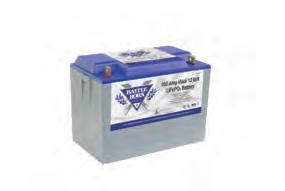































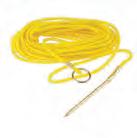






ICAST SPECIAL DISCOUNT



Lasting 2-3 times longer than wooden, concrete, and aluminum docks, our modular foating system is the preferred dock choice for residential, commercial, marina, liesure, and other applications. Customizable and confgurable for boat docks, liesure and recreation docks, and drive-on jet ski and personal watercraft!



•High-quality plastic
•Environmentally-friendly
•Guaranteed for 20 years
•Near-zero maintenance
•Completely customizable
•UV and pollution resistant

www.candockcf.com






 by Raymond Munoz, Capt. Jax
by Raymond Munoz, Capt. Jax
Ido look forward to the reworks on the fourth, but there are other night time activities in July that I look forward to even more. Full moon shing during the mangrove snapper spawn is amazing fun. Mangrove snapper, sometimes called grey snapper, are one of the most common snapper in Florida and throughout the Gulf and into the Caribbean. ey can be found anywhere where there is structure. ey are known for their excellent eyesight and for this reason are almost always targeted with the lightest possible tackle given the conditions. ey are also amazing table fare with a so , akey white meat that is sweet.
e mangrove spawn is typically in July and August. ere are plenty of methods, but this is the way I do it. On and around the full moon seems to o er the best action. Since we’ll be o shore I’m not picky about the tide but only require that there is current. Any wind is ne, except a West wind. Find some hard bottom in 25 to 55 feet of water. e more structure the better. Set up your chum and let it ride. e yellowtail will likely be a part of this too so we’ll sh both while we are here. A spinning rig with a 6000 series reel is how I roll with the mangies’. e rig is an ounce or two egg sinker on the mainline, to a swivel and a light uorocarbon leader of 15-20 lbs. Make your leader about 18 inches in length. e hook is a 3/0 slice shank J hook by Mustad #92661. is hook is important because it has little barbs on the shank that help to hold the chunk bait in place. I nd that dead chunked pilchards work best at night, even beating out live bait.
With your chum slicked out behind the boat cast a chunk of sardine out into the slick and close the bail when it hits the bottom. Since we are shing yellowtail at the same time, I’ll freeline a much lighter rig with silversides just below the surface and let it dri along in the chum. You can catch big mangroves with this method. If o shore at night is intimidating, mangroves can also be caught on the inside. typically, the sh will be smaller, 12- 15 inches. In parts of the bay and even above the bay our sea grass seems to be making a slow comeback. Find a grassy place with current in 6 to 10 feet of water. Lay out your chum. Use light spinning tackle with 10 lb uorocarbon leader and small wire hooks or a small jig head, maybe 3/16 oz. e preferred bait again is small chunks of pilchards.
Captain Jax Bait and Tackle490c E 4th Ave, Hialeah, FL 33010
@captainjaxmiami
786.300.5362

Swamp invaders are taking over, and we need your help! Mayan, golden Oscars, and midas cichlids have been on the rise throughout the fresh waterway systems of Miami. ere has been an uptick in these exotics being caught in the urban waterways and even pushing North to the county lines and all the way West into the Everglades. ese sh were introduced by people who made a bad decision to release their pet sh into neighborhood lakes and canals, which now has resulted in an explosion in their numbers. None of our local predators can keep in check. is is why we, as anglers, need to step up and help combat these invaders. Why, you ask? Well, since there is only so much habitat and only so much food that the system can sustain, these invasive sh are consuming resources that our prized sh, such as the largemouth bass, peacocks, snook and tarpon need.
Fishing Forecast: As the waters continue to heat up with the summer rays in full e ect, so will the tarpon bite. ey will need to come up for oxygen exposing themselves to anglers on the prowl. You will want to be ready with a 3-4 inch suspending jig or uke that you can lead them with. Making sure your lure matches the current bait locally found in your water such as a mullet or shad. Live bait is always a great option as well. Peacock bass are a year-round target sh, although we do nd that in the summer they tend to sit deeper in the water column. We run diving baits or live shiners with a split shot about 8-10 inches from the hook. Rule of thumb in the summer is “slow and deep”. Snook are also picking up this time of year and can be targeted on bridges and moving waterways that have rocks or culverts that they can hide in or around.


 Captain Mike Tojdowski
Captain Mike Tojdowski
Urban Legends Fishing Charters


Call/Text 305-998-3375
Facebook / Instagram @Urbanlegends shing or check out our website ULFish.com






























 by Capt. Bouncer Smith
by Capt. Bouncer Smith
Itook a whirlwind trip around Florida in the 3rd week of May. I started in lower Tampa Bay catching loads of trout and small snook with guides Gri n Dean and then Alan Engel. Next, I shed with Bill Lepree in South Palm Beach catching beautiful peacock bass and clown knife sh. Miami closed out the week with very slow wreck shing, but Captain Abie Raymond saved the late a ernoon with a variety of sh highlighted by a sail sh and a big tarpon for Ben Eskanazi. So, let’s look into July. As the temperature rises the shing changes a lot. You will nd that live baiting along the edge can get very slow, while trolling will improve. e most important weapon for summer trolling on the edge is rigs that run deep. Planers are the most popular approach in recent times. 3 and 1/2 drone spoons shed behind number 4 or 6 planers produce a great variety. Replace that spoon with a ballyhoo or strip behind a sea witch type lure may slow the action a little, but the quality goes way up. Wahoo, king sh and sail sh all like that meat and lure a lot more than metal.
Another option is large, lipped plugs like the X-rap 20 and 30 on braid line in the 30 to 50 pound range. We troll South varying the depth between 90 to 250 feet. When we get action, we concentrate on that depth for a while. If wahoo are your target then troll with the current and try to start before dawn or sh till dark. e wahoo like low light.
Your second choice is to head o shore. Everybody needs to be watching for birds and oating debris. If you are working sargassum, you need to watch to see if the birds are active in the area and watch under the grass for forage sh. ese two indicators tell you if you are in a live area or a dead area which will usually not produce game sh.
If you nd wood, rope or other otsam you need to get a bait deep to seek out wahoo. X-rap 20 or 30 on your braided line will do a good job without much rigging. Drone spoons or rigged bait behind a planer take more work, but are also productive.
If you add a big marlin lure to your trolling spread, it may pay o in two ways. First it draws mahi to your smaller baits as a teaser and secondly you may nd a giant mahi or marlin on the end of your line. Just drag this lure 30 to 50 feet behind the boat. It always pays to bring along your sword sh/deep drop rig. A daytime sword sh or some bottom dwellers may save the day.

If you want some good catch and release shing, snook will be schooled up in all the inlets. Remember these snook are spawning so always use circle hooks and keep those snook in the water while removing the hook and grabbing a photo. Snook, resident tarpon and snapper love dining at night and it is usually cooler, so this makes a few options to escape some of the heat. Speaking of escaping heat, don’t forget that the last week of July there is a two day lobster mini season. Please boat extra cautiously. Both boaters and divers need to practice safe dive ag rules.
Capt Bouncer Smith305-439-2475
captbouncer@bellsouth.net

To most July smells like hot dogs and hamburgers on the grill, reworks, and freedom. To me, July smells like tarpon slime and fresh Mahi blood on the deck. Schools of small pilchards and sardines ood the bay. ese bait schools make the slick summer bay surface look like rain is falling on it. We even call them “rain bait” because of this appearance. In July we sh with these live pilchards large enough to hold a size 1 or 1/0 hook. e tarpon are smaller and more acrobatic in July. ey are lots of fun on 15-20 lb out ts. Fish for these tarpon with a 4 foot, 40 lb. uorocarbon leader and a hook appropriately sized for the pilchards you nd on that particular day. e tarpon will be stacked up in the inlets and under bridges facing into running tide. ey will bite better at night as they almost always do, in dock lights especially.
Snook will be there eating the same bait at the same places, but you’ll need to drop your baits deeper for them. Fish a Jig head heavy enough to hold bottom in your location.

O shore, July usually provides lots of small Mahi. In July the Mahi are typically 8-12 miles o Miami, as a rule of thumb. Usually, you will have to throw quite a few back that are under sized. Fish ultra-light tackle and y tackle and you will have a blast casting to big patches of sargassum and looking for sooty terns wheeling and picking low. Fish for them with live pilchards a er you’ve located them trolling a small feather or buck tail jig. Good luck and GO HARD.
Captain Abie Raymond305.775.5197
@abie_raymond


As we move into July, I split my time between shing in Flamingo and shing o shore out of Miami. On the West coast, I’m still targeting snook and red sh along Cape Sable and up the Coast. My baits of choice are shrimp and pin sh under popping corks or your choice of weedless jerk bait or gulp shrimp on a ¼ oz jig head. Another thing to look for in July is for oating tripletail from around East Cape Canal to Middle Cape. ese sh will just be oating on their sides, just cruising with the tide. A live shrimp or any small arti cial/ y will work on these sh. On the gulf side you can still nd huge schools of permit out in the Gulf while shing on top of wrecks and rock piles. My bait of choice is a live blue crab on a small jig head or shrimp pattern arti cial.

On the Atlantic side, out of Miami, you will nd me either on the reef chumming up the yellowtail or running o shore in search of mahi mahi. For the yellowtail once I’m on the section of the reef I want to sh I just chum and wait for the sh to come to us. I rst let these sh get comfortable in our chum line. e closer they get to the boat the less chance you’ll have of getting them grabbed by a barracuda or a shark once hooked. We’ll use a small jig head with either silverside, squid, or strip of ballyhoo. Toss the bait into the chum slick and let it dri naturally.
On our mahi trips, I’m usually running a gunning for most of our trip. I’m looking for birds or debris or sargassum. I’ll then have my clients pitch a buck tail jig or live bait. Pilchards are a favorite this time of year.



Scalloping is the perfect family fun activity. Kicking around in the shallows and picking up these delicious little morsels is like an underwater Easter egg hunt. Bay scallop season opens across most of Florida’s west coast this month, so grab your mask, ns and snorkel, load up the kids and hit the water.

Fenholloway through Suwannee Rivers Zone (including Keaton Beach, Steinhatchee): June 15-Labor Day. is region includes all state waters east of Rock Island near the mouth of the Fenholloway River in Taylor County and north of Alligator Pass day beacon #4 near the mouth of the Suwannee River in Levy County. is area has a lowered bag limit June 15-30. See bag limits for more.
St. Joseph Bay and Gulf County: Aug. 16-Sept. 24. is region
includes all state waters from the Mexico Beach Canal in Bay County to the westernmost point of St. Vincent Island in Franklin County. e area marked with FWC buoys south of Black’s Island is a Bay Scallop Restoration Area and no scalloping or anchoring are allowed.
Franklin County through NW Taylor County (including Carrabelle, Lanark, St. Marks): July 1-Sept. 24. is region includes all state waters from the westernmost point of St. Vincent Island in Franklin County to Rock Island near the mouth of the Fenholloway River in Taylor County.
Levy, Citrus, Hernando Counties Zone (including Cedar Key, Crystal River, Homosassa): July 1-Sept. 24. is region includes all state waters south of Alligator Pass day beacon #4 near the mouth of the Suwannee River in Levy County and north of the Hernando – Pasco county line.
Pasco County: July 1-August 6. is region includes all state waters south of the Hernando – Pasco county line and north of the Anclote Key Lighthouse in northern Pinellas County, and includes all waters of the Anclote River.

Daily vessel limits do not allow individuals to retain more than the perperson limit. ere is no size limit on bay scallops.
Fenholloway through Suwannee River Zone:
• June 15-30: Daily bag limit per person is 1 gallon in-shell or 1 cup shucked. Daily vessel limit is 5 gallons in-shell or 2 pints shucked.
• July 1-Labor Day: Daily bag limit per person is 2 gallons in-shell or 1 pint shucked. Daily vessel limit is 10 gallons in-shell or ½ gallon shucked.
All Other Zones:

Daily bag limit per person is 2 gallons in-shell or 1 pint shucked. Daily vessel limit is 10 gallons in-shell or ½ gallon shucked.
• Legal methods of harvest include by hand or with a landing or dip net. Recreational harvesters are required to have a Florida saltwater shing license unless they are 1) exempt from needing a license or 2) have a no-cost shoreline shing license and are wading from shore to collect scallops (feet do not leave bottom to swim, snorkel or SCUBA and harvesters do not use a vessel to reach or return from the harvest location).
• Direct transit of legally-harvested bay scallops is allowed through closed areas.
Hey!As you visit or patronize any of our advertisers… please mention that you saw them in their local










Estoy deseando que lleguen los fuegos arti ciales del 4 de julio, pero hay otras actividades nocturnas que me apetecen aún más durante este mes: la pesca con luna llena durante el desove del pargo de manglar. El pargo de manglar, a veces llamado pargo gris, es uno de los pargos más comunes en Florida, así como en todo el golfo y el Caribe. Son conocidos por su excelente vista y, por este motivo, casi siempre se pescan con el aparejo más ligero posible dadas las condiciones; se pueden encontrar en cualquier lugar donde haya estructura. Su carne blanca, blanda y escamosa es muy dulce.
El desove en los manglares suele tener lugar en julio y agosto. Hay muchos métodos para esta pesca, pero yo lo hago así, pues la luna llena y sus alrededores parecen ofrecer la mejor acción. Como vamos a estar en alta mar, no soy exigente con la marea, sólo necesito que haya corriente y cualquier viento es bueno, excepto el viento del oeste. Busque fondo entre 25 y 55 pies de agua, cuanta más estructura, mejor; prepare su cebo y déjelo correr. Es probable que el jurel también forme parte de esta pesca, así que pescaremos ambos mientras estemos aquí. Un aparejo giratorio con un carrete de la serie 6000 será el elegido; el aparejo es un plomo de huevo de una o dos onzas en la línea principal, a un eslabón giratorio y un líder de uorocarbono ligero de 15-20 libras. El bajo de línea debe tener unos 45 cm de longitud y el anzuelo es un J hook 3/0 de Mustad #92661. Este anzuelo es importante porque tiene pequeñas púas en la caña que ayudan a sujetar el cebo en trozos. Creo que las sardinas muertas en trozos funcionan mejor por la noche, incluso mejor que el cebo vivo.
Con el cebo colocado detrás de la embarcación, lance un trozo de sardina en la marea negra y ajuste el cierre cuando toque el fondo. Como estamos pescando jureles al mismo tiempo, yo lanzo un aparejo mucho más ligero con pejerreyes justo debajo de la super cie y lo dejo a la deriva con el cebo; con este método se pueden pescar grandes mangles.
@captainjaxmiami
Si la pesca nocturna en alta mar resulta intimidatoria, también se pueden pescar mangles en el interior, pero normalmente los peces serán más pequeños, de 12 a 15 pulgadas. En partes de la bahía, e incluso por encima de la misma, nuestra hierba marina parece estar haciendo una lenta reaparición. Busque un lugar con hierba y corriente, entre 6 y 10 pies de agua; coloque su carnada y utilice un aparejo de spinning ligero con un bajo de línea de uorocarbono de 10 lb, así como anzuelos de alambre pequeños o una plantilla pequeña, quizá de 3/16 onzas.

Los invasores de los pantanos están tomando el control ¡y necesitamos tu ayuda! Mayas, Oscares dorados y cíclidos rey midas han ido en aumento en todos los sistemas de agua dulce de Miami. Ha habido un crecimiento en la captura de estos peces exóticos en las vías uviales urbanas e incluso empujando hacia el norte a las líneas del condado, todo el camino hacia el oeste en los Everglades. Estos peces fueron introducidos por personas que tomaron la mala decisión de liberar a sus mascotas en los lagos y canales del vecindario, lo que ahora ha dado lugar a una explosión en su número. Ninguno de nuestros depredadores locales puede mantenerlos a raya; por eso nosotros, como pescadores, tenemos que ayudar a combatir a estos invasores. ¿Por qué? Bueno, ya que hay un determinado hábitat y cantidad de alimentos que el sistema puede sostener, estos peces invasores están consumiendo los recursos que preciados peces como la lubina, pavones, róbalo y sábalo necesitan.

Pronóstico de pesca para julio

Dado que las aguas continúan calentándose, con los rayos del sol de verano en pleno efecto, también lo hará la picadura de sábalo, pues van a tener que subir para obtener oxígeno y así exponerse a los pescadores al acecho. Usted quiere estar listo con una plantilla de suspensión de 3-4 pulgadas o un uke. Asegúrese de que su señuelo coincide con el cebo actual que se encuentra localmente en su agua, como un salmonete o sábalo. El cebo vivo también es una buena opción.
El pavón es un pez que se puede pescar todo el año, aunque en verano tiende a estar más hundido en la columna de agua. Nosotros utilizamos cebos de inmersión o luciopercas vivas con un anzuelo partido, a una distancia de entre 8 y 10 pulgadas del anzuelo. La regla de oro en el verano es “lento y profundo”. El róbalo también está picando en esta época del año y puede encontrarse en puentes y vías uviales en movimiento que tienen rocas o alcantarillas donde ocultarse o en los alrededores.
Capitáns Mike Tojdowski
Llamada / Texto: 305-998-3375
Síguenos en Urban Legends Fishing Charter Facebook / Instagram @Urbanlegends shing www.ULFish.com




























Para la mayoría, julio huele a perritos calientes y hamburguesas a la parrilla, fuegos arti ciales y libertad. Para mí, julio huele a baba de sábalo y sangre fresca de mahi en la cubierta. Pequeños bancos de sardinas y sardinetas inundan la bahía, haciendo parecer como si cayera lluvia sobre la resbaladiza super cie veraniega de la misma; incluso los llamamos “cebo de lluvia” por su aspecto. En julio pescamos con estas sardinas vivas, lo su cientemente grandes como para sujetar un anzuelo de tamaño 1 ó 1/0. Los sábalos son más pequeños y acrobáticos en julio, así que son muy divertidos con equipos de 15-20 libras. Pesque estos sábalos con un líder de uorocarbono de 4 pies y 40 libras y un anzuelo del tamaño adecuado para las sardinas que encuentre ese día en particular. Los sábalos se amontonarán en las ensenadas y bajo los puentes de cara a la marea. Picaran mejor por la noche, como casi siempre hacen, especialmente bajo las luces de los muelles.
El róbalo estará allí comiendo el mismo cebo y en los mismos lugares, pero tendrá que dejar caer la carnada más profundo para atraerlos. Pesque con una cabeza de Jig lo su cientemente pesada como para aguantar el fondo en su localización.
En alta mar, el mes de julio suele traer muchas Mahi pequeñas, las cuales suelen estar habitualmente entre 8 y 12 millas de Miami. Por lo general, tendrá que devolver bastantes que no alcanzan el tamaño adecuado. Pesque con aparejos ultraligeros y con mosca; se divertirá lanzando en dirección a grandes manchas de sargazo y buscando charranes tiznados, que revolotean y pican a poca altura. Pesque con sardinas vivas, después de haberlos localizado y lance una pequeña pluma o plantilla de cola de ciervo.



¡Buena suerte y mucha diversión!
Capitán
Abie Raymond305.775.5197


@abie_raymond
www.gohard shing.com







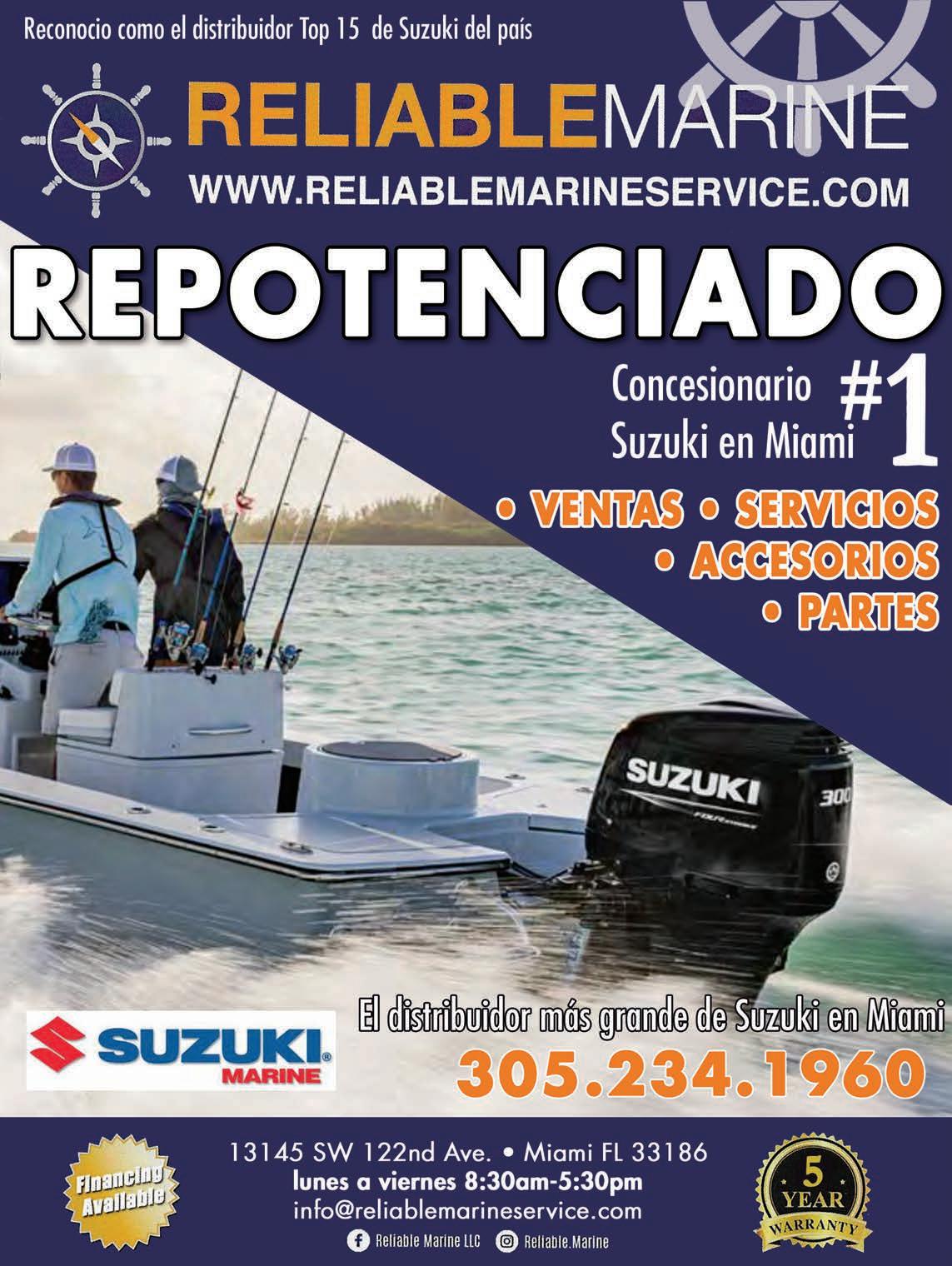
Amedida que nos adentramos en julio, divido mi tiempo entre la pesca en Flamingo y la pesca en alta mar desde Miami. En la costa oeste, sigo pescando róbalos y gallinetas a lo largo de Cape Sable y en la costa. Mis cebos de elección son el camarón y el sargo bajo corchos popping; usted también puede elegir el camarón gulp en un jig head de ¼ oz o un cebo arti cial antialgas.
Otra cosa que hay que buscar en julio es el triplete otante desde East Cape Canal hasta Middle Cape. Estos peces otarán de lado, navegando con la marea. Una gamba viva, una mosca o cualquier cebo arti cial pequeño funcionará con estos peces. En el lado del golfo todavía se pueden encontrar grandes bancos de palometa mientras se pesca en la parte superior de los naufragios y montones de rocas. Mi cebo de elección es un cangrejo azul vivo en una cabeza de jig pequeña o en un patrón arti cial de camarón. En el lado atlántico, en las afueras de Miami, me encontrará en el arrecife pescando serviolas o en alta mar en busca de mahi mahi. Para el jurel, una vez que estoy en la sección del arrecife que quiero pescar, me limito a cebar y esperar a que los peces vengan a nosotros. Primero dejo que los peces se sientan cómodos en nuestra línea de cebo. Cuanto más se acerquen a la barca, menos posibilidades tendremos de que los agarre una barracuda o un tiburón una vez enganchados. Utilizaremos una pequeña plantilla con pejerrey, calamar o una tira de ballyhoo. Lance el cebo en la marea negra y déjelo otar de forma natural. En nuestros viajes para pescar a los mahi, suelo llevar un cañón durante la mayor parte del viaje. Busco pájaros, sargazos o restos. Entonces les pido a mis clientes que lancen una potera o un cebo vivo, las sardinas son una de mis favoritas en esta época del año.
Nestor Alvisa@hooked_on_ amingo_charters
Hooked On Flamingo Charters



786.387.2443

 Tim Barefoot
Tim Barefoot
We are seeing a heavy line of sargassum right now. Here’s how to make the best of it.
Along with grass comes sh. We’re having a great dolphin year, with some nice yellow ns and wahoo in the mix. e grass is a wonderful thing if you know how to take advantage of it.
It’s a well-known fact that the surface trolling bite slows as the sun rises to the 10 to 11 a.m. position. is is the reason to get baits down where the sh are, rather than continuing to troll surface baits while the one “meat stick”—the deep planer rod—gets all the bites. Tuna and wahoo don’t wear Maui Jims. When the sun penetrates deeper into the water, they simply go lower in the water column.
And… who says you have to be moving at 6-8 knots to get bites? Why not slow down and put several lines down where the sh are? It can result in steady, sometimes multiple hook ups. ere are several ways to accomplish this. You can use downriggers with release clips, use heavier trolling lures that fall when you occasionally take the boat out of gear, or use planer lures coupled with a slower speed to get baits down.
For example, a beautiful swimming (frozen) squid or ballyhoo on the downrigger is a ringer for the wahoo and tuna bite. An arti cial squid with an attached natural bait on a planer jig head or a deepdiving plug will also get bites. In addition these choices, a spread of slow-trolled live baits down deep is the ultimate o ering. We have several videos detailing the options listed above on our website.

With all the sargassum grass this year, this may be an especially attractive alternative to the standard 7 knots. When you’re constantly “shaggin’ grass,” you’re not as e ective, and it’s not good for moral when


deck hands ght more grass than sh. If you slow troll down a nice weed line with beautiful baits down deep in the strike zone, chances of getting bites are much better than shaggin’ grass at normal speed. Find structure and bait near a weed line and you’ll have the scenario for success. With or without structure or marking bait, the weed line is home to all types of life. We’ve cleaned yellow n tuna with a double handful of le sh in their stomachs the size of a quarter and smaller, along with small bit of grass.
If the weeds are not too scattered, troll as normal to nd the sh. When the sun gets up, slow down and concentrate on the areas you had bites earlier. Remember that the weeds are moving, along with everything that lives and feeds around the mats. Keep an eye out for other items oating in the grass mats to help keep up with your relative location.
For more from Tim Barefoot, go to barefootcatsandtackle.com.
As I write this, the largest mass of sargassum ever recorded is making its way to the Florida coast. For months, forecasters have been bemoaning the mess this 5,000-mile-long weed patch will make on our beaches, but I’m looking forward to what it brings.
Prey species live in the seaweed, and predators congregate around these weed lines. ere are going to be many di erent species of sh moving in closer than we usually get. Many anglers will enjoy chasing the larger predators; however, it’s fun to catch what we call peanuts, which are the small er dolphin sh that school up around the weeds.
e most distinguishing feature of dolphin sh is the bright neon green, yellow and blue coloration throughout their entire body. Dolphin have a long slender body, and the peanuts are typically 2 to 3 feet, with weights from 5 to 15 pounds. Dolphin get much larger than this, but the big ones don’t exhibit the same schooling behavior.
An amazing feature about dolphin sh is their dorsal n, which starts at the skull and continues all the way to the tail. To determine gender, male dolphin will have a more pronounced forehead, which almost becomes vertical with a 90-degree angle. Unlike most species of sh, the males tend to be larger than the females and are known as “bulls.”
Dolphin inhabit subtropical and tropical waters throughout the entire world. ey live o shore in the 70- to 300-foot depths. eir spawning season runs from April until August, as long as the water is warm enough. Dolphin broadcast spawn in current to ensure a higher rate of fertilization. Once the young hatch, they take shelter in sargassum patches or oating debris, which also provides a source of food since other juvenile sh will be hiding there also.
Fish in the big schools hanging around sargassum patches will usually be on the smaller side. So, you’ll want to use smaller baits like pilchards or thread ns and free swim them around the weeds. You might see a school of dolphin swarming your bait and ghting over it. eir bright colors and darting movements make them easy to spot.
Another option is to use small bucktail jigs or even 3-inch swimbaits. You can grab their attention by working lures like injured bait sh, and this is a great way to lure them out from under the debris.


While shing these patches, a great way to target larger sh is to sink a larger bait below the school. Larger dolphin and wahoo o en feed on peanut dolphin. It is illegal to use peanut dolphin as bait, but you could use ballyhoo, blue runner or even large thread ns.

e IGFA all-tackle world record dolphin weighed 87 pounds. It was caught by Manuel Salazar in the Papagayo Gulf in 1976.
Emily Rose Hanzlik holds 62 IGFA world records in various categories. She hails from West Palm Beach, where she has a part time Bow n Guide Service as well as shing classes for Jr. Anglers. Find her on social media @emilyhanzlikoutdoors.



NOAA Fisheries has announced that a closure to recreational harvest of red grouper in federal waters of the Gulf of Mexico will begin on July 21 and continue through the rest of 2023.

Perfect Vacation Getaway for Fishing, Boating & Outdoor Enthusiasts






e closure was spurred by landings information, which indicates the 2023 recreational annual catch target of 1,840,000 pounds gutted weight is projected to be met on July 20.
During the recreational closure, the bag and possession limit are zero for red grouper in or from federal waters of the Gulf. e prohibition on possession of Gulf red grouper also applies in Gulf state waters for a vessel issued a valid federal charter vessel/ headboat permit for Gulf reef sh.

If red grouper recreational landings exceed the annual catch limit (ACL) in a given year, the length of that following year’s recreational shing season will be reduced to ensure the recreational ACT is not exceeded in that following year.
For more information, visit www. sheries.noaa.gov.
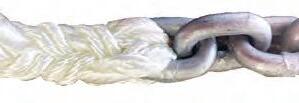
Nestled on six lush tropical acres of pristine waterfront directly on the Indian River Lagoon, take a step back in time to experience the very best of Old Florida charm with modern conveniences and services to make your stay truly memorable and unforgettable.



• FULLY FURNISHED 3 ROOM COTTAGES WITH FULLY EQUIPPED KITCHENS


Kingfsh Lodge includes a wide screenTV and bar for small gatherings

Sailfsh House features a wide covered wrap-around porch for larger groups
• Boat Trailer Parking on site w/ Water and Power
• 250 Foot Dock w/ Covered Area
• FREE Ice / FREE Guest Dockage
• Cable TV, Hi-Speed Internet

• 2 miles to the Ft. Pierce Inlet
• 12 miles to the Gulf Stream
• Laundry, BBQ Grilles and FREE use of our Kayaks




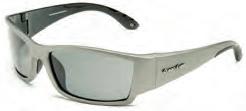
3011 N. Indian River Dr., Ft. Pierce, FL 34946 www.indianriverlagoonwaterfrontcottages.com Reservations and Information: (772) 349-2206


In 2018, when Hurricane Michael bowled over the Florida Panhandle, it decimated the shoal bass population in the Chipola River. e Florida Fish and Wildlife Conservation Commission estimates the population was depleted by 90 percent.


FWC is raising and stocking shoal bass to replenish stocks of this rare and native black bass. In May, 7,800 hatchery-raised shoal bass ngerlings were released into the river. is is the second consecutive year shoal bass were raised at the Blackwater Fisheries Research and Development Center near Holt, Fla. and then released into the Chipola River to enhance the wild population.
Shoal bass are one of four of Florida’s native black bass species, and this e ort marks the second time genetically pure shoal bass have been successfully raised at an FWC sh hatchery. Shoal bass are also a Florida Species of Greatest Conservation Need, which refers to native animals whose populations are of concern and are at risk or declining. e goal of raising and releasing these sh is to enhance the wild population to help maintain genetic purity and aid in the long-term conservation of this unique species of Florida black bass.
e Chipola River originates just north of Marianna, owing south for 95 miles through Jackson, Calhoun and Gulf counties where it joins the Apalachicola River. Currently, a catch-and-release-only regulation is in e ect for shoal bass on the Chipola River and its tributaries. Any shoal bass that are caught must be released alive immediately and possession is prohibited.
For more information, visit MyFWC/Freshwater.




During the 2023 Emerald Coast Open, 144 competing divers removed 24,699 invasive lion sh from the Gulf of Mexico. With support from Yamaha Rightwaters as well as many local, national and international conservation-minded organizations, the annual event set records for largest lion sh ( ve times) as well as the number of lion sh caught in both the pre-tournament and main tournament.





e mitigation of aquatic invasive species is one of the four pillars of the Yamaha Rightwaters mission,” said Martin Peters, Director, External A airs, Yamaha U.S. Marine Business Unit. “ e Emerald Coast Open helps foster healthy marine environments in the Gulf while educating the public about the damage a large lion sh population can cause. Yamaha Rightwaters will continue to support this tournament and applauds the e ort to help the Gulf of Mexico thrive as a strong shery.” sh prey on more than 167 di erent native sh species and can reduce some reef sh populations by up to 90 percent. ey are capable of eating sh two-thirds their size, and one lion sh can consume roughly 20 sh in a half hour.
“Since its inception in 2019, the Emerald Coast Open helped remove more than 72,000 total lion sh from Gulf waters,” said Alex Fogg, Coastal Resource Manager, Destin – Fort Walton Beach and Emerald Coast Open Organizer. “ e tournament not only yields immediate results and improvement within our sheries, it also demonstrates that catching lion sh is fun – and they are tasty! We’re glad to have the support of Yamaha Rightwaters and look forward to developing our relationship as we begin to plan for the 2024 tournament.”
To learn more about the Emerald Coast Open, visit emeraldcoastopen.com.

























On the Gulf side, Florida anglers are looking at a pretty solid red snapper season this year, with summer dates from June 16 through July 31 and additional fall dates to pursue one of the South’s favorite game sh.

It’s a di erent story over on the East Coast. With the way the federal government has regulated snapper shing in the Atlantic over the years, anglers have come to count themselves lucky if there’s any Atlantic snapper season at all. is year’s allowance of two days—July 14-15— for recreational snapper harvest in the South Atlantic has anglers looking for ways to make the most of it.
From all reports, there are scads of red snapper out there. Catching the per-person limit of one sh should not be a problem. e key to a productive day that’s worth the gas is planning. Here are a few tips to help you make the most of the red snapper rally.


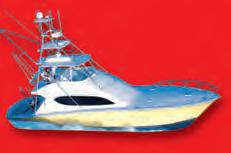

Load the Boat: With a limit of one sh per person, it’s time to load the boat with as many people as it will comfortably and safely hold so that you can ll the sh box with as many snapper as you are allowed. is is your two-day opportunity to ll the freezer with delicious sh. So, the more people you bring, the more sh you get to bring home. is is a great time to take kids. Kids love to sh, and they also take up less room in the boat.
Go With a Plan and a Backup Plan: For two days, it’ll seem like everyone with a boat is parked over every wreck and reef in the Atlantic. Get to the ramp early, and plan to be patient, because there will be a bunch of anglers with the same idea. Know where you hope to start the morning, but have several back-ups in case your honey hole doesn’t pan out. When you get there, if your graph doesn’t light up with life, don’t waste your time. Keep moving until you nd bait and sh.
Fish Big: With a one- sh limit, and no size limit, it pays to target the biggest sh down there. Fish live baits that are big enough to get past the smaller snapper down to 20-pounders. It wouldn’t hurt anyone’s feelings if a big grouper took the bait, either. is also limits the number of small sh you’ll give a case of barotrauma, which is a good thing.

Remember, use of a dehooking tool is required. ere is also a requirement for the use of non-stainless steel hooks. In waters North of 28-degrees N. latitude, the use of non-o set, non-stainless steel circle hooks is required when shing for snapper grouper species. A descending device is also required on board all vessels and must be readily available for use (attached to at least 16 ounces of weight and at least 60 feet of line).


For more tips, go to coastalanglermag.com.













With excellent strength for line-to-line connections, the double uni is a go-to knot for connecting main lines to leaders. It is a quick and easy knot to tie, unlike some of the other line-to-line knots, so it’s a great option for on-thewater applications. Furthermore, it is very good for connecting di erent line types and diameters securely, which makes it the best knot for mono-to-mono or mono-to- uoro connections.

It’s also a good option to secure braid to uoro, and while it might not have the strength of the FG knot for this application, the double uni is much easier to tie and will save you some headache in real-world situations.
A disadvantage to the double uni knot is it’s a little bulky. Although it is an inline knot that keeps everything running in the right direction, the bump it creates at the connection and the two tag ends pointing in either direction can interfere with casting performance. e knot can cause some friction going through the guides. e double uni, however, is perfect for rigs where your leader will remain outside your rod tip. It’s also the right choice when casting distance and accuracy are not primary concerns. In most real-world scenarios, it will not inhibit casting ability enough that you’ll even notice.
For more tips, tricks and knots, visit usangler.com.













































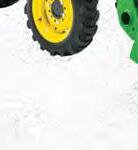


























































By completing conservation projects, the Chambers High School shing team recently earned a private, in-person custom rod building class with Mud Hole Custom Tackle. ey were the winning team in FWC’s School Fishing Club Conservation Project Competition and completed six projects including cleaning up and building mono lament recycling bins for their local waterbodies to win the grand prize.
All student anglers participating in the FWC’s 2022-23 School Fishing Club Program were required to complete at least one conservation project to qualify for funding associated with the program. Prizes were o ered by Mud Hole, Toad sh and Pure Fishing to encourage teams to complete multiple conservation initiatives. e competition awarded points per club participation in a variety of conservation-minded activities aimed at reducing the impacts of plastic pollution.

“Congratulations to these young anglers for their dedication to conservation,” said Tom Graef, FWC’s Freshwater Fisheries director. “ ey are making a di erence by leading the way for the next generation of anglers with these creative conservation projects.”
Punta Gorda Middle School won the second-place prize, and A. Crawford Mosley High School won the third-place prize.

“Supporting youth education is so important to our mission at Mud Hole Custom Tackle,” said Anthony Youmans, Mud Hole’s Education Program Director. “We’re honored to contribute the grand prize in this year’s competition and are always supportive of FWC’s e orts to lead conservation projects here in Florida, our home state.”
Mud Hole Custom Tackle, based in Oviedo, is the world’s largest supplier of rod building and tackle cra ing goods and instruction. From rod building












and repairing, to y tying and lure building, Mud Hole is the leading e-retailer and mail order supplier to hobbyists, small manufacturers and large OEMs, worldwide. O ering a superior shopping experience at mudhole.com, rapid ful llment, stellar customer service, and world class online content and instruction, Mud Hole Custom Tackle is the trusted source for the rod building and tackle cra ing community.
FWC’s School Fishing Club Program welcomed 38 new and 14 returning student angling clubs in Florida to the program last year, supported by the Division of Marine Fisheries Management, the Division of Freshwater Fisheries Management, and the Florida Youth Conservation Centers Network. e clubs committed to complete the provided FWC curriculum and at least one conservation project. Club mentors provided support and hands-on training in knot tying and shing gear assembly, as well as assistance with the clubs’ local events to increase student anglers’ con dence in the sport of shing. Information about the 2023-24 School Fishing Club Program will be announced later this summer.
For more information, visit MyFWC.com/SFC.
The 2023 CCA Florida STAR competition presented by Yamaha kicked o Saturday of Memorial Day weekend. Four STAR tagged red sh have already been recaptured, but what you won’t believe is that none of the anglers were CCA members and registered in the competition. ose four anglers missed out on their chance at some awesome boats and packages, and that means all the boats and packages are still available.

Registration for the summer-long competition is open until Sept. 4 and invites CCA members, non-members, anglers and non-anglers to take a shot at winning their share of prizes valued at more than $500,000 including boats, motors, electronics, tackle, scholarships and more. is event is about the shery winning, too. Participants become citizen biologists and citizen garbologists by submitting photos of their catch or garbage collected during the competition in the STAR app. In order to win, participants must take their entry photo on the 2023 CCA Florida STAR o cial measuring device, which can be picked up for free in any West Marine store or one of the many other STAR distribution locations throughout Florida. Find them listed on the STAR website.
“Every year we have lots of tagged red sh recaptured by unregistered anglers who are not members. We hope that this year, with more prizes, we will see more winners,” said CCA Florida STAR Director, Leiza Fitzgerald. “ e youth participation has been heartwarming, and to date STAR has awarded $800,000 in youth scholarships, plus in 2021 two youth anglers won a boat motor and trailer package that consisted of a 16-foot ski , 25hp Yamaha, Minn Kota Trolling motor and trailer. Every year there are over 100 winners In the STAR competition. Get registered and you could be one of them.”
e CCA Florida STAR competition presented by Yamaha has a division for everyone, from the non-angler to the experienced angler. It is comprised of 15 divisions targeting 12 inshore and o shore species, plus the Kick Plastic Trash Division presented by Papa’s Pilar which encourages cleanup of trash from Florida’s coastal waters. STAR’s signature Tagged Red sh Division o ers seven winners, ve adults and two youth, the choice of a Contender Boats 22 Sport, Path nder Boats 2200 TRS and a Carolina Ski 162 JLS. STAR has additional new Tagged Red sh sponsors with Dek Kat Boats o ering a 27 Flatz Kat and Sea Doo and Can-am o ering a fun package of a Trophy Fishing Sea Doo and the Can-am Defender. Each boat will be powered by a Yamaha, the competitions presenting sponsor. Be the rst winning tagged red sh angler for your choice of all these packages as your prize.
Once again in 2023, we have the ALTA SUPER STAR tagged red sh swimming in Florida waters. If it is recaptured, the winner will receive $50,000 cash! For the rst two youth anglers who win in this division, prizes include a tiller boat powered with Yamaha outboard, trailer, Minn Kota trolling motor and Humminbird electronics.
Each of Florida’s coastal counties have on average four tagged red sh for a total of over 160 prize-winning sh. e best opportunity to catch one of this year’s tagged red sh will be in Citrus and Charlotte Counties, STAR’s 2023 Destination Counties, which each have eight tagged red sh in their coastal waters.

For the o shore anglers, the Tigress Outriggers and Gear Tagged Dolphin Division o ers one winner a $10,000 cash prize. e rst STAR registrant and CCA Florida member who catches a tagged dolphin will win. Twenty tagged dolphin (Mahi Mahi) were released for STAR in the lower Florida Keys.
STAR is a family-friendly competition, and CCA Florida youth members (ages 6 to 17) can participate for free. Kids are encouraged to submit entries in the Youth Scholarship Division presented by Realtree Fishing for an opportunity to win one of 12 scholarships totaling $100,000. Other divisions include the Power Pole Conservation Division, Bona de Kayak Division and Ladies Division as well as the Yamaha Guides which allows guides to participate when they are not on a charter for hire. Since most division winners are determined by a random drawing, it is not about catching the biggest sh, any size sh can win. Remember, it is very simple really, every sh you catch between now and Monday, Labor Day o ers the CCA member who is registered in STAR the opportunity to win their share of $500,000 in prizes and scholarships. You can’t win If you are not registered.
STAR is also a tool to gather catch data, it creates awareness for conservation, our sponsors and CCA Florida. Launched in 2015, the competition has set the bar for other shing tournaments to follow by implementing conservation-friendly alternatives such a catch-photorelease format and a trash division. Florida STAR focuses on conservation with its technology-based, CPR format and dedicated smartphone app which promotes the proper handling of species and allows participants who are members of CCA and registered in the competition to upload photos of their catch or trash buckets in the STAR competition and be rewarded for their e orts. CCA Florida also provides access to the data collected to other conservation organizations and universities to help educate the public and for use in their studies on conservation, habitat and stock assessments.
You can still register for STAR 2023. You have all summer and all the boats and packages are still available. To receive additional information on divisions, prizes and more, visit cca star.com or Facebook.
Put Orange Lake on your bass- shing itinerary for next spring. is 12,550-acre lake in Alachua County southeast of Gainesville is a springtime conveyor belt of big bass.
From February through April this year, 19 Orange Lake largemouths heavier than 10 pounds were reported to TrophyCatch, FWC’s big-bass recognition program.
Bass heavier than 13-pounds are given “Hall of Fame” status by TrophyCatch. Five 13-pluspounders have been caught statewide this year. Four of them came from Orange Lake, and three of those were caught in February.


e most recent one we’ve heard of was a sh caught back on Feb. 7 that just popped up on the TrophyCatch Facebook
Kelly


a giant 13-pound, 3-ounce monster swimming a
Man… that sounds like a lot of fun.
For more information, visit www.trophycatch orida.com.



















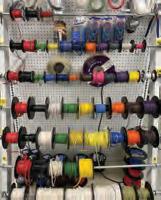


The surf can be bountiful and as easy as shing can be when the seas are calm. On a recent trip to the Gulf of Mexico’s calm shores, I was certain I was going to catch them at will. To the naked eye, conditions were as good as it gets, but many fellow anglers fell short of their dreams on this beautiful day. Here are some modi cations I made on the y that allowed me to come out ahead of most others.
is day provided us with glass-calm seas, clear water and bait everywhere, but one key ingredient was missing, substantial tide. What most of us focused on, including myself, were the calm conditions. is is always the draw for trout shing on the beachfront in Texas, and it is seldom the norm.



I did research the tide, and it was an early high

heading out, which, once again, seems perfect. However, the slope on the graph was a slow outgoing tide, not one that was going to trigger many bites on its own. Once I realized this and watched others leave empty handed, I decided to search for places that would encourage the slow outgoing current to increase in velocity. I sought out guts in the bars perpendicular to the shore. ese same guts have the potential to cause dangerous riptides, and they can also be the best place to sh. You typically see these guts by studying the waves, but with no waves I had to use my polarized glasses. ankfully, the water clarity made this an easy task. I drove along the beach looking for these, and once I spotted them, I stood on the back of my truck to increase my elevation to identify the best ones.
I’d found my pattern. Now the catching could begin! Keep in mind, as slow as the tide was moving, it did not create a dangerous situation


(always be cautious of rip tides on the beach), but it did speed up the current enough to trigger a good bite. I thoroughly worked all edges of these guts, nding most bites on the back side where the tide pulled bait from the shallow gut to the deeper second gut.

When the tide is slow, I like to try and get a reaction strike by throwing something a little di erent or working my lure erratically. On this day, I was throwing a rattling so -plastic paddletail. I also picked one with a bright green tail to stand out from the millions of bait sh traveling the rst and second guts. All of these tactics combined allowed me to salvage a day when most le with empty stringers.
e beachfront can be a great place to sh, and it’s fun for the kids. My boys enjoy wading beside me, and when the shing is over it’s time to play at the beach!






Alaska shing season started o with a bang for anglers visiting Ketchikan, Alaska. Halibut shing charters produced great catches of halibut, paci c cod, lingcod and rock sh. Salmon shing trips resulted in big king salmon while we awaited the arrival of silver salmon and pink salmon.

Early season typically is more inconsistent than the deep summer months of July, August and September. With that being said, our guests enjoyed better than average shing to start o the 2023 Alaska shing summer.








Fishing tours for cruise ship guests and y-in anglers spent the majority of May bottom shing. ese sheries consist of shing near and o shore waters for halibut, cod and rock sh. Deep-water jigging for halibut had guests reeling in keeper-sized halibut as well as oversized halibut ranging from 10 pounds to 120 pounds. ere’s nothing quite like the thrill of hooking into these deep sea dwellers, and the delicious white meat holds up well when frozen and shipped back home to the lower 48.
Halibut weren’t the only species caught during our halibut shing charters. Paci c cod were a staple while bottom shing for halibut. Cod were concentrated in large numbers on the sandy ats eating a variety of bottom rigs. Traditional halibut shing rigs with glow-in-the-dark squid and cut herring caught the majority of Paci c cod. We also found great success jigging for cod with metal jigs and so plastic swimbaits.
Following up halibut shing with rock sh and lingcod jigging made for a combination catch that had everyone smiling. We do this in shallower water with light tackle. While catching pelagic rock sh such as yellowtails and duskies, we also caught big lingcod. With such a phenomenal bottom shing area, you’re never quite sure what will grab the end of the line. Giant lingcod make a trophy catch for anyone visiting Alaskan waters.
King salmon shing opened June 1. Everyone rejoiced at the opportunity to pursue this iconic sh. Big king salmon catches came in throughout the entire southeast Alaska region. Ketchikan is known as the salmon capital of the world, and it didn’t disappoint. Herring Cove and Mountain Point were the rst areas to open up. is resulted in large numbers of anglers trolling for prized king salmon. As we look forward for the entirety of the region to open, these were the rst areas where big catches came in.
Over the next couple months, the shing will continue to heat up! Halibut will continue to show up in larger numbers as the water temperatures increase. In addition, the salmon shing will see a big burst of silver salmon and pink salmon to combine with the larger king salmon. It’s all happening now!
For more information, visit www.ketchikan shingtrips.com or call (907) 617-4717.






Most of the time the saying is true, bigger baits equal bigger sh! Although elephants eat peanuts, a big bait pro le is something big sh sometimes can’t resist whether you’re shing the open ocean or the Great Lakes. I’ve spent a lot of time in the last couple years experimenting with lures that are larger than what my previous comfort zone was for bass. It is pretty special to see what gets curious to come look at or bite these big baits.
ere are many di erent types of swimbaits on the market, but I’ll break them down into two styles to keep it simple. ere are hard, gliding-style swimbaits with treble hooks and there are so -body swimbaits. Each has a time and a place, and both attract some very big sh.
Depending on where you are in the country and the size of the forage in your lake, a normal meal for a bass is usually much bigger than you would think. Bass have huge mouths to accommodate large prey items. A two- or three-pounder has no problem at all swallowing a 6- to 8-inch bluegill whole. I’ve seen 10-plus-pounders eat gizzard shad up to 14 inches long! Trying to exactly duplicate the larger bait sh in your lake with a natural presentation is the key to drawing attention to your arti cial lure.
With hard swimbaits, my rst choice is a shad imitation. Most of the places I sh are full
of shad, and shad seem to be a favorite food source for bass.


Crappie are another forage species people sometimes forget about. Lately, when throwing big baits
over deeper water, I’ve caught some big sh with crappie down in their throats.
With so swimbaits, I usually go to a bluegill imitation. I like so baits because they are more weedless, and you can creep them through the grass or along the bottom in places where bluegills live.
Big swimbaits can get mighty expensive. If you are just getting started with them, I would suggest sticking with the more a ordable baits that get good reviews until you get your con dence up. en you can dive into some of the larger, more customized lures.
Learning to sh big baits is best done by getting on the water and doing it. Just get out there and experiment with retrieves until you nd out what works. Of course, throwing giant lures requires special equipment. I like 13 Fishing’s a ordable Defy for a rod. It’s an 8-foot swimbait rod that handles most big lures with ease. I pair this with a 300 sized reel, like the 13 Fishing Concept A3 and some 20- to 25-pound Seaguar Abrazx.
I hope this article sparks someone’s interest to get out there and throw a big bait. Once I stepped out of my comfort zone, I discovered it to be one of the coolest and most fun ways to target big bass all year long. Don’t hesitate to reach out to me on social media if you have questions about these tactics or any others.
Tyler Woolcott is a professional tournament angler and guide. Check out his website at www.tylerwoolcott shing.com.

really realized that I hooked a monster. Adrenaline started pumping hard and the fear of losing it almost sent me into a panic. I was alone, facing the biggest cat sh I ever seen in 23 years.
Italy’s River Po has done it again.
Last week, MADCAT pro sta er Alessandro Biancardi caught a 9-foot-long wels cat sh that will likely replace the IGFA world length record for the species. e monster wels measured 285 centimeters (9 feet, 4.2 inches) in length and stands to beat out the existing record by just 4 centimeters, or about an inch and a half.

Biancardi is a veteran cat sh angler who has targeted wels for more than two decades. He landed his potential new record a er a more than 40-minute battle while shing solo in an aluminum


jonboat.
e giant sh ate a so -plastic paddletail shed on a jighead.
“In silence, I approached the rst spot and a er few casts a powerful bite arrived. e sh stood still some seconds before starting a very complicated ght, between strong currents and a lot of submerged obstacles,” Biancardi wrote in a blog post. “I calmly managed to ght what I felt to be a prehistoric sh. I followed it for 40 endless minutes. When it surfaced for the rst time, I
“I tried gloving its mouth two or three times, but it was still too strong,” he wrote. “I decided to go in shallow water trying to land it from shore, and a er few tries, I managed to land it! I tied the sh to let him recover from the long ght then I suddenly realized that the boat was not anchored, and it was going away in the current. I was forced to have a swim to recover it with all my stu .”
Biancardi then called some friends from a nearby sh camp to come help him get a good measurement on the beast. A er taking measurements, the sh was released. Without a weight, it will not be considered for the all-tackle world record, which stands at 297 pounds, 9 ounces for a sh caught from the Po back in 2010.
For more, go to https://madcat- shing.com.


Coastal Angler and The Angler Magazine, Suzuki Marine and Sea Eagle have come together to offer readers a shot at this Sea Eagle FishSkiff 16 paired with a Suzuki DF4 outboard that’ll take you wherever the fish are. The FishSkiff 16 is an inflatable fishing boat that is lightweight, sturdy, stable and extremely packable. It rolls up small enough to fit in the trunk of a car and quickly inflates into a fishing machine. Powered by Suzuki’s four-stroke DF4A, you’ll have to hold on to your hat as you scream over the flats. Designed for efficiency and performance and portability, the DF4A provides all the speed and acceleration you can handle. It’s lightweight and can be attached or removed with ease.

Ifyou’re anything like my dad, you give your family everything. Your name, your time, your values — the people in your life know they can depend on you for practically anything. In exchange for imparting all of this energy and experience, you expect nothing in return.
e point? You deserve to treat yourself once in a while. You do so much for the people you care about. Now it’s time to focus on you for just a few minutes. at’s where the Men’s Due Volta Watch comes in. is astonishing innovation provides a digital readout that’s powered by a precise quartz engine, combining both analog and digital timekeeping.
Out tted with a stopwatch, alarm, a.m./p.m. settings, and day, date and month complications, this timepiece stands out from the crowd. With its large face and handsome, masculine design, this watch is perfect for the back nine and the happy hour afterwards. Water-resistant up to 3 ATM, this timepiece won’t wimp out if you have a run-in with a water hazard.
Other hybrid watches can sell for thousands of dollars, but because we’ve built more than 1 million watches, we know how to create real value. at’s why we can o er this timepiece for just $59! If you’re not completely satis ed with this watch, return it for a full refund.

Act quickly! is one-of-a-kind watch has been one of our fastest sellers this year. Of our original run of 2,872, we only have 389 left for this ad! In the last couple of years there’s been a watch shortage, but Stauer has got you covered. If you’re the kind of man who gives everything and expects nothing in return, it’s time to treat yourself.

Watch Speci cations:










•Complications: stopwatch, alarm, a.m./p.m. settings, and day, date and month



•Precision movement chronograph

•Stainless steel caseback and crown

•Water-resistant to 3 ATM
Men’s Due Volta Watch $399 $59* + S&P Save $320








 By Gary Turner
By Gary Turner
The sun was just cresting the mountains and the moon was low in the west as Capt. Ron Ratlief, of Ron’s Fishing Guide Service, and I began shing for redear sun sh on Arizona’s Lake Havasu. is trip has been on my bucket list for years. I just never made the time, which is ridiculous considering Havasu is pretty much the Holy Land for bream shing.
Havasu is a large Colorado River reservoir on the Arizona/Colorado border. In recent years, the lake has produced a series of world-record redear sun sh, with the current mark standing at 6-pounds, 4-ounces. Havasu’s freakishly large redears are due to a plentiful food source of invasive mussels that have in ltrated the system. e lake also holds some enormous bluegills, which I came to nd out over two days shing with Ron and a third day with my buddy Zac Mickle.
You could feel it was going to be a hot one—over 100 degrees— as the cool morning air evaporated with the sun. A er all, Havasu is an oasis in the middle of a desert. We started the morning sight shing coves. Havasu’s water is as clear as the Keys, and I half expected to see bone sh swimming by. We searched several coves and saw lots of sh, including bluegills, carp, cat sh, giant gizzard shad, tilapia, green sun sh and small stripers, just
to name a few. We also found some redear sun our target species, but they were small, a pound or less, and we were looking for big ones!
We moved to plan B and headed to deeper water. Havasu has the most man-made attractors and brushpiles I’ve ever seen. might be a bunch in South Carolina’s Santee, but you would never see them. e crystal-clear water makes everything visible, and as the sun got higher, we could see even more. We saw structure clearly in 18 feet of water with large redears on it. I dropped a night crawler on a jig head down, and BAM! I had a good bite! We landed a nice redear heavier than two pounds and continued hitting deeper brush, where we saw some big ones and caught a thick 14-incher that was pushing 3 pounds. A er several other sh in the 1 to 1 ½-pound range, Ron suggested we move back to a cove for a few last casts before heading in.
In the cove, I got hammered by a good one, which upon landing was about the same size as the 2-pounder from earlier, but it looked more like a bluegill. I was thinking it might be a hybrid between the two species, which was later con rmed.

If you like bream, you need to check out Havasu. It is a beautiful lake in the desert with some giant redears and bluegills. I might not have


caught a world record this year, but I’ve already booked next year’s trip.

Check out Gary Turner’s shing adventures on his YouTube channel at youtube.com/ @FishingWithGary.
















Travel the globe, without leaving home—with this set of the world’s ve most popular pure silver coins. Newly struck for 2023 in one ounce of ne silver, each coin will arrive in Brilliant Uncirculated (BU) condition. Your excursion includes stops in the United States, Canada, South Africa, China and Great Britain.
Each of these coins is recognized for its breathtaking beauty, and for its stability even in unstable times, since each coin is backed by its government for weight, purity and legal-tender value.

2023 American Silver Eagle: The Silver Eagle is the most popular coin in the world, with its iconic Adolph Weinman Walking Liberty obverse backed by Emily Damstra’s Eagle Landing reverse. Struck in 99.9% fine silver at the U.S. Mint.



2023 Canada Maple Leaf: A highly sought-after bullion coin since 1988, this 2023 issue includes the FIRST and likely only use of a transitional portrait, of the late Queen Elizabeth II. These are also expected to be the LAST Maple Leafs to bear Her Majesty’s effigy. Struck in high-purity



99.99% fine silver at the Royal Canadian Mint.
2023 South African Krugerrand: The Krugerrand continues to be the best-known, most respected numismatic coin brand in the world. 2023 is the Silver Krugerrand’s 6th year of issue. Struck in 99.9% fine silver at the South African Mint.



2023 China Silver Panda: 2023 is the 40th anniversary of the first silver Panda coin, issued in 1983. China Pandas are noted for their heart-warming one-year-only designs. Struck in 99.9% fine silver at the China Mint.


2023 British Silver Britannia: One of the Royal Mint’s flagship coins, this 2023 issue is the FIRST in the Silver Britannia series to carry the portrait of King Charles III, following the passing of Queen Elizabeth II. Struck in 99.9% fine silver.





These coins, with stunningly gorgeous finishes and detailed designs that speak to their country of origin, are sure to hold a treasured place in your collection. Plus, they provide you with a unique way to stock up on precious silver. Here’s a legacy you and your family will cherish. Act now!
You’ll save both time and money on this world coin set with FREE shipping and a BONUS presentation case, plus a new and informative Silver Passport!
2023 World Silver 5-Coin Set Regular Price $229 – $199 SAVE $30.00 (over 13%) + FREE SHIPPING






FREE SHIPPING: Standard domestic shipping. Not valid on previous purchases. For fastest service call today toll-free


1-888-201-7070






















Offer Code WRD333-05









Please mention this code when you call.







 By Capt. Judy Helmey
By Capt. Judy Helmey
Check out the crazy markings on this Pennsylvania bass!
Recently the American Fisheries Society Black Bass Conservation Committee (BBCC) posted photos of this striking, black-splotched largemouth bass on its Facebook page.

During the old days of chumming, lots of shermen used glitter in their chum, but we sure didn’t talk about it. Why? It was a serious sh-catching secret, and it works as well now as it ever did.
Of course, back then we hadn’t heard of microplastics. We didn’t equate those tiny ashy akes with pollution. Traditional glitter is made with aluminum and plastic, which is a really bad thing to be throwing in the water. ankfully, today there is biodegradable glitter made of plant cellulose. is more environmentally friendly product enables us to keep using our old tricks without doing harm to the ocean.
When you add biodegradable glitter to your chum, the oils coat
every single small piece of glitter. When it hits the water, each piece of glitter becomes sh attractant. As it slowly spreads through the water column, it catches sunlight and re ects it. e oil onboard each small piece of glitter leaves a trail that only a hungry smart sh would care to follow.
You might ask how do I know that glittering chum works? Well, when you start getting hits and landing sh, open the sh box and take a look. You know how glitter is. It gets everywhere and sticks to everything. Well, your sh box and the sh in it will be coated in glitter. Trust me.

Capt. Judy Helmey runs Miss Judy Charters o the Georgia coast. Check them out at missjudycharters.com.

e photos, by professional bass sherman Grae Buck, show his wife Jessica Buck holding a sh with melanosis. e post goes on to explain that this condition is when something a ects the pigment expression in the skin, turning it black. Termed blotchy bass syndrome, it has been found in black bass species in waterbodies across the United States with increasing frequency.
“While a truly melanistic sh would be all black, we more commonly see parts of the sh black, irregular blotches, spots, or ns,” the post reads. ese crazy colored sh show up from time to time, and previously it has been explained as a genetic mutation. In its explanation of this sh, however, BBCC pointed to research being conducted at the U.S.G.S. Eastern Ecological Science Center in West Virginia.
e research found that this blotchy skin condition is actually caused by a viral infection, an emerging novel adomavirus. Researchers have not pinned down a cause yet, but a U.S.G.S. report suggests higher incidences of blotchy bass syndrome in disturbed-water systems, with a potential link to chemicals. ere is currently broad ongoing research to try and determine the causes and e ects of this infection.


Follow the BBCC at www.facebook.com/AFS.Black.Bass.


Home of world class fishing on the beautiful Watauga Lake, rugged Doe River and designated trophy trout stream, Watauga River



